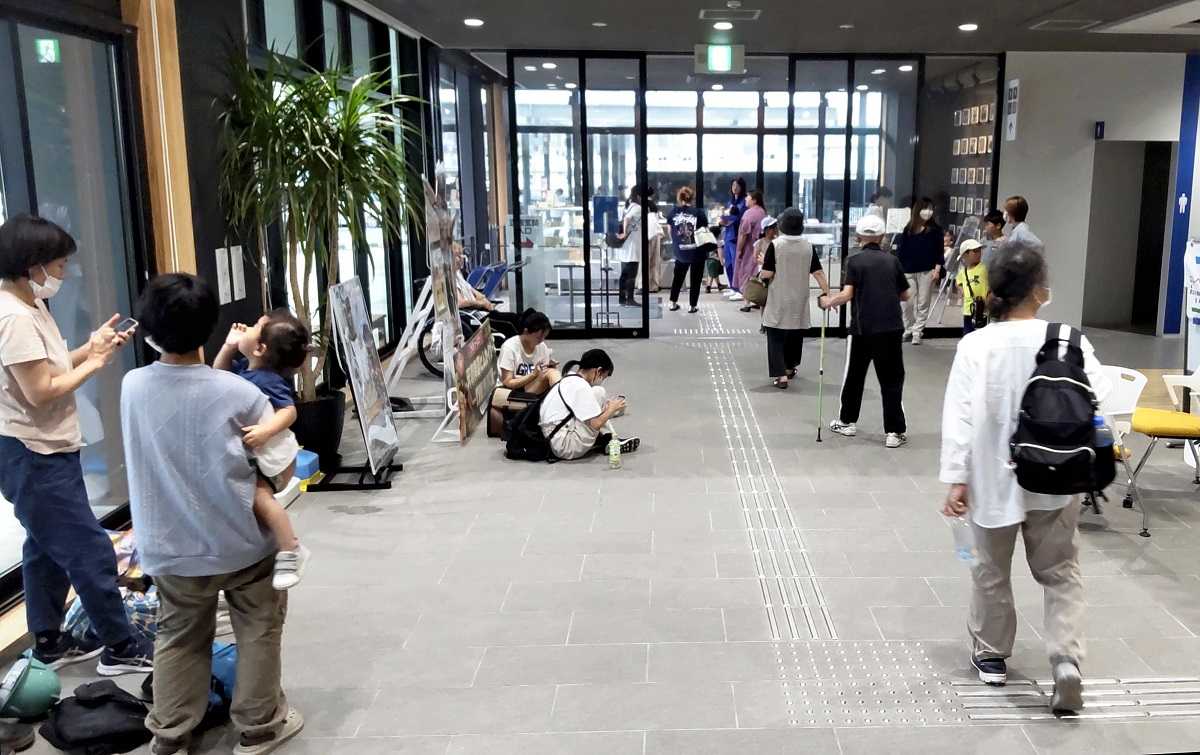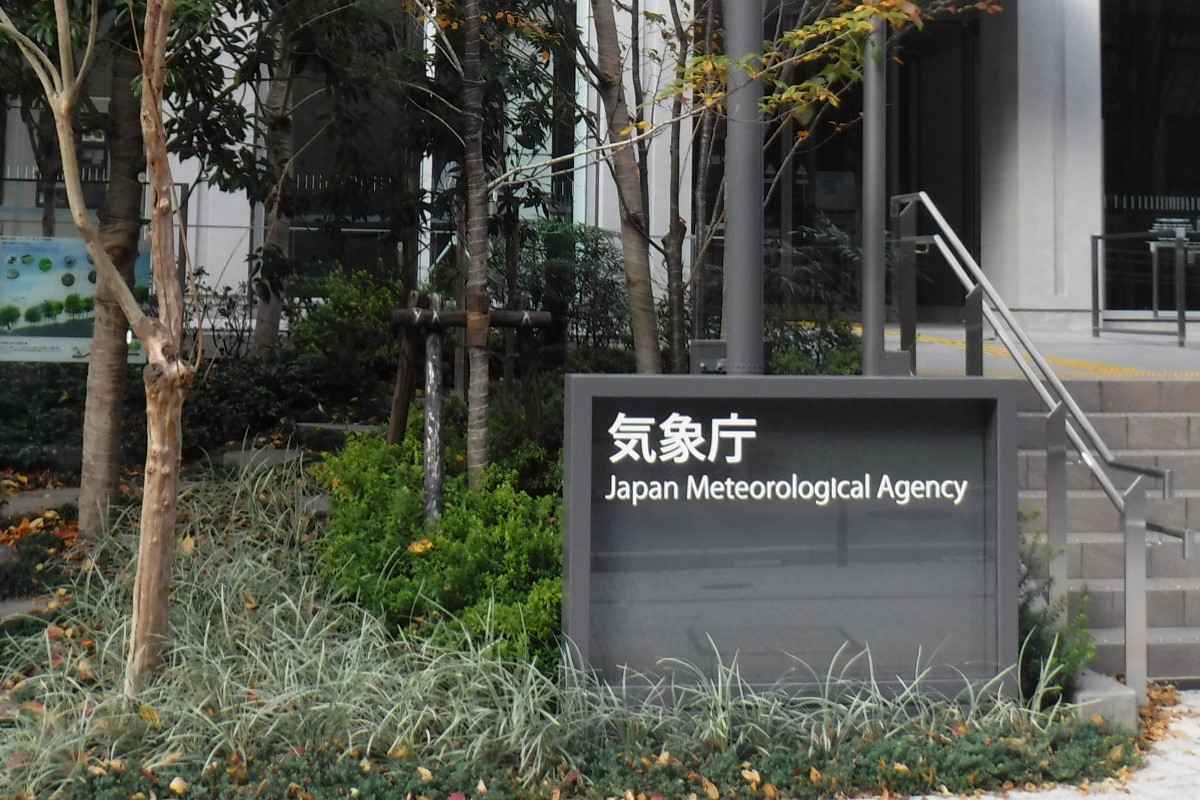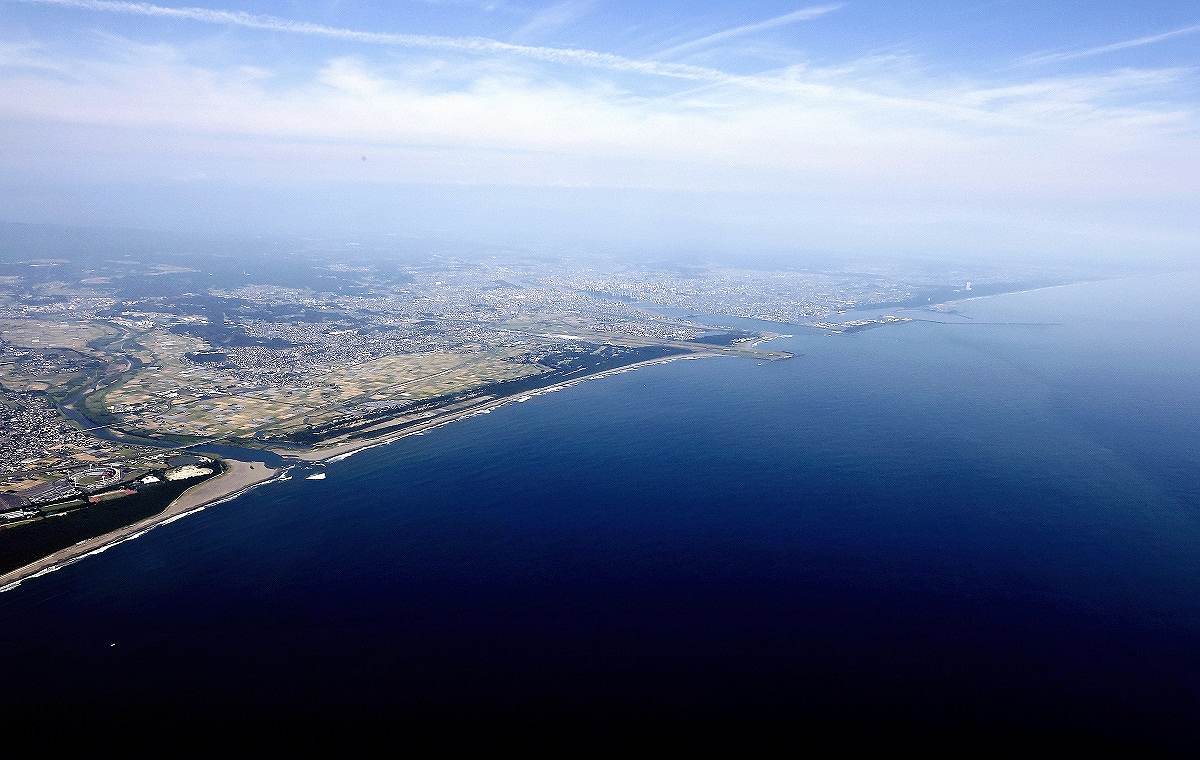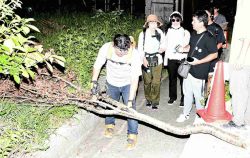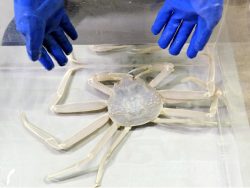Nankai Trough Megaquake Tsunami could Hit in 2 Minutes; Japan Authorities Urge Caution after Recent Earthquake

17:01 JST, August 13, 2024
The Japan Meteorological Agency has issued its first special advisory regarding a possible Nankai Trough earthquake, saying that the possibility of a massive earthquake occurring in the area is currently higher than normal.
If a megaquake occurs in the area, the damage is expected to be devastating. For example, the height of a tsunami triggered by the earthquake could exceed 30 meters in areas on the Pacific Ocean side near the epicenter. The JMA called for residents to be prepared for possible earthquakes for at least one week.
A trough is a seabed trench at the boundary between two tectonic plates. The Nankai Trough stretches around 700 kilometers from Suruga Bay off Shizuoka Prefecture to the Hyuganada Sea off Miyazaki Prefecture.
The Philippine Sea Plate subducts beneath a plate on the land side with a subduction velocity of 3 to 5 centimeters per year, leading to the accumulation of strain underground. The accumulated strain causes massive earthquakes about once every 100 to 150 years.
The government’s Headquarters for Earthquake Research Promotion estimates that there is a 70% to 80% chance of a magnitude 8 to 9 earthquake occurring in the Nankai Trough in the next 30 years.
An earthquake occurs when an overriding plate on the land side, with its edge having been slowly pulled down by the subducting plate, snaps back. This forces the ocean water upward, which generates tsunami waves. According to government estimates in 2012, islands in Tokyo, Shizuoka Prefecture and Kochi Prefecture could be hit by a tsunami over 30 meters high.
If an earthquake occurs near a coastal area, a tsunami could reach the coast of Shizuoka Prefecture in as little as two minutes, Wakayama Prefecture in as little as three minutes and Kochi Prefecture in as little as five minutes. When people feel a tremor, they need to evacuate to higher ground as quickly as possible.
In the worst-case scenario for a Nankai Trough earthquake, 231,000 people could die and the economic damage could reach ¥207.8 trillion. The earthquake could plunge the entire country into crisis.
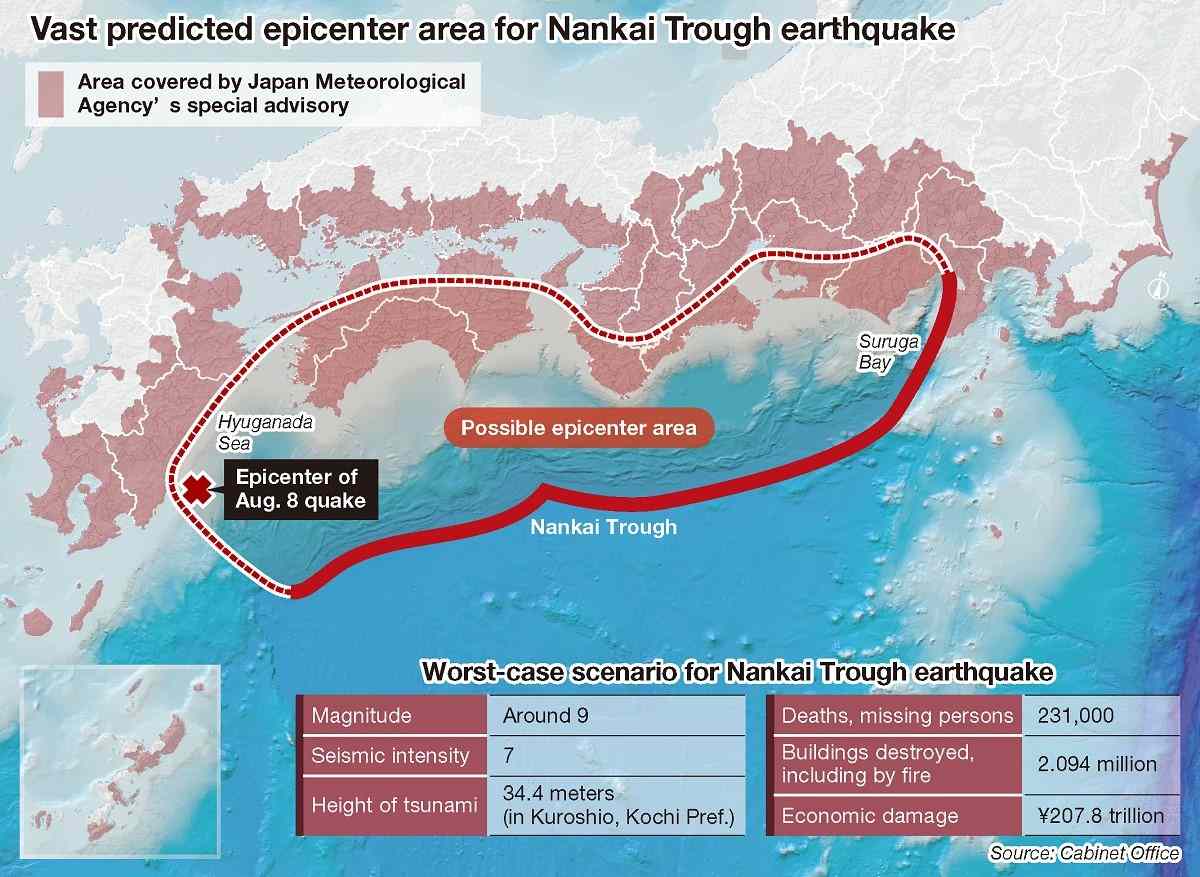
The government has designated 707 municipalities in 29 prefectures including Tokyo as disaster prevention measures promotion areas, calling on them to develop disaster response facilities and promote other preparations. Those municipalities are expected to be hit by shaking with an intensity of lower 6 or greater or tsunami higher than 3 meters if a Nankai Trough earthquake occurs. The ongoing megaquake advisory covers these municipalities.
Greater vigilance urged
The warning system regarding a Nankai Trough earthquake was introduced in May 2019.
In Japan, measures for strong earthquakes had long been based on the prediction of Tokai earthquakes that are expected to occur in Suruga Bay or other places. However, the government changed the policy as it failed to predict the Great East Japan Earthquake.
The 1707 Hoei earthquake, estimated to have been magnitude 8.6, is thought to have ruptured the entire Nankai Trough. In 1854, the magnitude 8.4 Ansei Nankai earthquake occurred 32 hours after the magnitude 8.4 Ansei Tokai earthquake. Two years after the magnitude 7.9 Showa Tonankai earthquake in 1944, the magnitude 8 Showa Nankai earthquake occurred.
Given the cases of earthquakes occurring close together, Japan created a system to urge residents to prepare for earthquakes after a powerful earthquake like the recent one occurs because there is a higher chance of subsequent strong earthquakes associated with the first earthquake.
According to the JMA’s criteria, if a magnitude 6.8 or greater earthquake or a slow slip, the slow shifting of tectonic plates, is observed near an area along the Nankai Trough, the agency will issue a special advisory with the keyword Under Analysis. Then, an earthquake assessment committee will analyze a potential connection between the observed abnormality and a possible massive earthquake. In the case of a magnitude 7 or greater earthquake, a special advisory will be issued with the keyword Megathrust Earthquake Attention, while for a magnitude 8 or greater earthquake the keyword is Megathrust Earthquake Alert.
In the latest case, a magnitude 7.1 earthquake occurred in the Hyuganada Sea. The JMA therefore issued a Megathrust Earthquake Attention.
Megathrust Earthquake Attention means that residents in relevant areas are recommended to make sure that they are prepared for earthquakes for at least one week and ready to evacuate as needed.
When a Megathrust Earthquake Alert is issued, people in need of extra help who might be slow to evacuate in the event of tsunami will be asked to evacuate as a precaution.
The probability of a magnitude 8 or greater earthquake occurring within a week of the occurrence of a magnitude 7 or greater earthquake is one in several hundred, according to the JMA. Nobuo Fukuwa, a professor emeritus at Nagoya University who is familiar with the special advisory system, said: “Even if the advisory is issued, of course an earthquake might not happen. I hope people will use this opportunity to discuss their earthquake preparations with family members.”
Related Tags
"JN Specialities" POPULAR ARTICLE
-
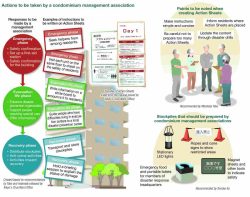
Disaster Preparedness / Apartment Management Associations: Instructions on What to Do in the Event of Power Outage
-

Kawasaki Releases Guide to Sheltering at Home During Disasters, with Essential Tips for Apartment Residents
-

The Japan News / Weekly Edition (12/19-12/25)
-

The Japan News / Weekly Edition (12/26-1/1)
-

The Japan News / Weekly Edition (1/9-1/15)
JN ACCESS RANKING
-

As Chinese Tourists Shun Japan, Hotels and Stores Suffer
-

Tokyo Economic Security Forum to Hold Inaugural Meeting Amid Tense Global Environment
-

Osaka-Kansai Expo’s Economic Impact Estimated at ¥3.6 Trillion, Takes Actual Visitor Numbers into Account
-

Japan Govt Adopts Measures to Curb Mega Solar Power Plant Projects Amid Environmental Concerns
-

BOJ Gov. Ueda: Highly Likely Mechanism for Rising Wages, Prices Will Be Maintained
